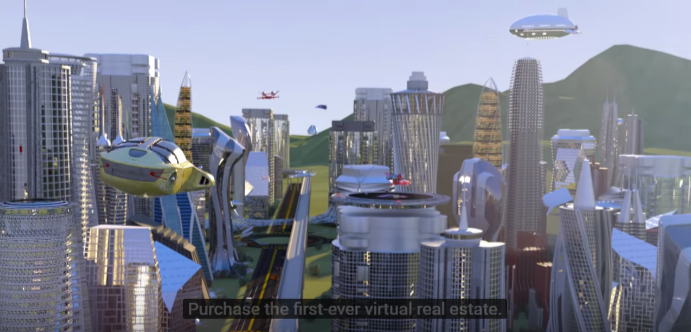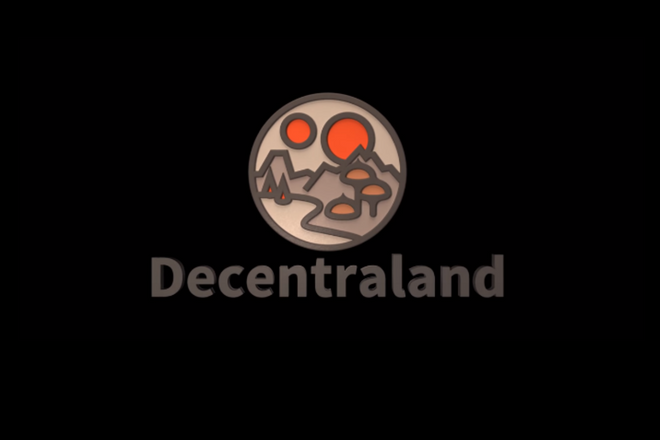Have you ever had the thought that, if such things were possible, you’d like to remake the world? While eradicating poverty and health crises might be on top of many people’s lists, these are solutions we’re still crawling towards. Blockchain might be addressing issues like providing financial services or mobile data to the unbanked, or cleaning up the fishing industry, but it’s a far cry from terraforming our social structures into the ideal versions we’d like to see.
On a more fun, practical level, however, blockchain technology is taking us back to our childhood days, when playing The Sims was all the rage. Decentraland, however, takes the concept of a virtual lalaland one step further by building us a decentralised, interactive 3D world, owned and designed by users, where VR (virtual reality) rules the roost.
Decentra-what?
Decentraland is a publicly owned, customizable virtual world that lives on the blockchain. This means that, with the amount of virtual real estate available within the Decentraland environment, buyers will be able to secure a piece of it, have their ownership live on a public ledger, and utilize their owned space however they see fit.
Decentraland, first conceived of in 2015, has been developing in 4 distinct phases. We will take a look at each of these in turn.
Decentraland’s Evolution
The Stone Age
June 2015 kicked off with the first version of Decentraland, in which users were awarded pixels on an infinite 2D grid. Each pixel contained metadata used to identify its owner, but utilization of such spaces was limited to the technology it was using and didn’t provision for newsworthy use-cases.
The Bronze Age
Fast-forward to March 2017: Decentraland moves over to 3D, where it is divided into land parcels. A Bitcoin blockchain now verifies ownership, and a world editor has been added, allowing for greater customization of one’s piece of virtual real estate.
The Iron Age
With the incorporation of the ERC-20 token, MANA, in August 2017 and a terraform auctioning event in Q4 2017, users are now able to claim LAND and interact with other users in the Decentraland ecosystem. This social experience is enriched by allowing developers to build apps on top of Decentraland, which they’re able to distribute to users and monetize in the process. Users are now able to incorporate scripting (i.e. interactive content) onto owned land, making such spaces come alive with custom apps that change the user experience. Custom items and multiplayer support has been added, along with avatars and peer-to-peer communications in the form of live chat. It also includes the introduction of an in-game cryptocurrency payment system.
The Silicon Age
According to the company website, the upcoming Silicon Age (date TBA) will bring with it “a full-fledged 3D world, with full VR support and customization of the laws of physics. Live in the blockchain.”
What does this level of futuristic tech imply for the use of the platform?

Use cases
Technology is only ever as exciting or interesting as what it’s able to provide the average user with. So, apart from its highly unique blockchain concept, what makes Decentraland worth looking into?
These are some of its potential use cases:
- Advertising (think virtual billboards dotting land parcels and virtual versions of New York City’s Times Square)
- Applications (a wide variety of applications, all designed to enrich and deepen the Decentraland experience)
- Content curation (neighborhoods that have shared interests in common will become niche hubs)
- Digital collectibles (yes, even CryptoKitties! Users will be able to publish, distribute, and collect any type of blockchain-issued digital asset, an area that’s ripe for innovation by creators)
- Education (an industry that is notoriously slow to adopt new technologies, but with a gigantic user base that could potentially benefit from being exposed to educational experiences within Decentraland)
- Social groups (communities like chat groups, online forums, and centralized multiplayer games could all plug their tribes into the Decentraland ecosystem, while offline communities could utilize the space to expand their activities online)
- Training and professional development (limited only by course designers’ and facilitators’ imaginations, Decentraland could provide a highly engaging backdrop)
- Virtual tourism (why leave the comfort of your seat when you can take a virtual reality tour to made-up worlds that celebrate the pinnacle of human creativity and ingenuity)
The Role of an Ecosystem like Decentraland in Modern Society
A few years ago, Second Life was all the rage. While enthusiasts loved the idea of shedding their identities to become virtual versions of whatever they wanted to be, skeptics were highly critical of a pastime which they saw as hedonistic and escapist. Is Decentraland merely an updated cousin of the erstwhile online world that, in its heyday, hosted a million registered users?
Certainly, one cannot deny the fact that there are more pressing matters in the world than traversing made-up 3D spaces inside your computer. However, human life is varied and nuanced. We might use blockchain technology to make the supply chain transparent, but we can also have some fun with it. The online realm is gaining more and more influence in the real world – many people’s jobs and livelihoods take place entirely over computers, for example – so why not showcase the best of what our creative and social genes have to offer?
And for this, Decentraland is on standby, ready to offer users interesting, immersive experiences in the virtual world, powered by the blockchain.

